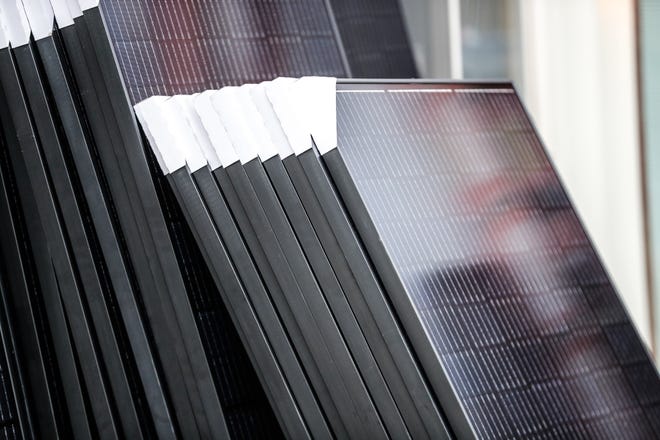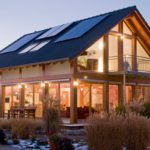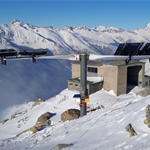How to get started with solar panels on your home in Indiana – IndyStar
Energy Disrupter
If you’re interested in installing solar panels on your home in Indiana, now may be the time to get the ball rolling.
There are some changes to state and federal solar policy coming soon that will make solar power more expensive in the Hoosier state. If you want to take full advantage before these changes take effect, experts suggest reaching out to solar providers in the next few months.
If that short timeline has you stressing, don’t worry: We spoke with solar providers, programs and experts around the state to put together a comprehensive guide for you.
Here’s everything you need to know, if you’re interested in installing solar panels on your home.
Net metering and solar policy
The state’s energy policy task force is continuing to debate what’s next for Indiana’s energy mix. Some people would like to see the the task force push for legislators to review another renewable energy policy: net metering.
Net metering is a mechanism that pays homeowners for the energy that their solar power generates for the electric grid. It’s an incentive for homeowners to install solar, advocates say, and can lessen the burden of cost of the installation. But in Indiana, it’s phasing out.
In 2017, the Indiana General Assembly passed a bill phasing out net metering over a period of several years. Anybody who installed solar before the first stage in 2017 has full net metering credit until 2047. Right now, those who install solar panels can receive full credit until 2032. But if you install solar after June 30, 2022, you will not be eligible for the full retail credit of your solar energy.
Riding the ‘solar coaster’:Tax credits extended as part of COVID-19 relief bill
Because this change will make it more expensive for homeowners, some worry it will negatively impact the solar industry, as well, by decreasing demand.
“We’re gonna really risk either sort of companies having to lay off people because of dried out demand in Indiana, or these companies shifting their operations to neighboring states,” said Jesse Kharbanda, executive director of the Hoosier Environmental Council.
Federally, there’s also a solar investment tax credit that may soon be decreasing.
Currently, that credit saves homeowners 26% of the cost of their installation, but will decrease to 22% at the end of 2022, unless extended. It was supposed to fall to 22% at the end of last year, but was extended by the COVID-19 relief bill in December.
How do you know if your home is a good fit for solar?
First things first. Make sure your roof is in good condition to hold your solar array, said Zach Schalk, Indiana program director for the nonprofit Solar United Neighbors.
A good rule of thumb, he said, is that if your roof will need to be replaced in the next 10 years, you should go ahead and replace it now.
“If you need to take your panels down, replace your roof and put them back up, that will add some costs,” he said.
The next step is understanding how much sun your solar panels can feasibly get. Typically, panels that face south receive the most sun, while panels that face north receive the least. If you have a lot of trees around your home, it may hamper your ability to get a lot of sun.
Scrub Hub:Can an HOA stand in the way of a homeowner who wants to go solar?
You should also make sure that you have enough space for panels. But keep in mind that even if you don’t have enough room to cover all of your electric needs, it doesn’t mean you shouldn’t install solar, Schalk said.
“You don’t have to cover 100% of your electric needs with solar; you can still see significant savings,” he said. “And, if this is something that’s important to you, you can still do your part to reduce your carbon footprint.”
If you’re not able to supply 100% of your home’s energy use now, you can always expand later, said Steve Ricketts, a co-owner and manager of Solar Energy Solutions. If you’re interested in someday expanding, you should ask your solar installer to take measures to make that easier and more cost effective in the long run.

How should I pick a solar company?
One of the best ways to pick a solar company, experts say, is looking for companies that have a North American Board Certified Energy Practitioners, or NABCEP, certification.
“It’s a gold standard,” said Kendall Ludwig, the Indiana branch manager for GRNE Solar, and it means that provider has had specialization and education in the installation of solar. Look for companies that have been around for a while, and have had several customers, he advises.
Unfortunately, the solar market has been flooded with some other, less-ethical companies in recent years, Ricketts says. So he also suggests looking for a series of other factors, including:
- Does your provider have electrician expertise in-house?
- Are they using roofing products that will protect against leaks?
- Are they fully trained in technical, electrical, design and regulatory aspects?
- Will they visit your home for accuracy?
- Will they use specialized shade-reading equipment?
- Will they provide a warranty backed by a third party?
Possibly the most important piece of advice, experts almost unanimously told IndyStar, is to get more than one quote.
“I would always encourage people to get at least three quotes before deciding,” Schalk said.
To find possible solar providers, do some online searching, he advises, and read as many reviews as you can find. To start, you can also check lists made by organizations such as the Solar Indiana Renewable Energy Network.
You can also receive personal help from programs such as Solar United Neighbors or Solarize Indiana, which talks to installers and compares their proposals and costs for people who are interested in solar.
What’s the timeline for installing solar?
Installing solar panels is a six-step process, Ludwig said, and all in all can last as long as 8 to 10 weeks.
First, there’s the consultation. This is when as a homeowner, you meet with solar professionals to receive a quote and talk about plans for your solar array. You should bring your utility bill showing a year’s energy usage to this meeting, Ludwig advises. When you decide to move forward, you sign a project agreement getting everything started.
Within 1 to 2 weeks after that, Ludwig said, a site assessor will come out, view your property and take measurements. That information will then go to the project management team, and engineers will take that data to draft an exact layout for your solar panels.
Scrub Hub:Do wind turbines and solar panels go to the landfill, or can they be recycled?
Then, at GRNE solar, the company would send that layout to you for signing and then to the city or municipality for permitting. This is around the same time that you would file for interconnection with the energy grid.
This part is the longest process, Ludwig said, because it can take several weeks to wait for responses: “It’s action packed, and then it kind of goes quiet for a bit because we’re waiting for the municipality to review the permitting.”
Once those permits are approved, installation begins, and lasts just about 2 to 3 days. After that, the company will schedule a time to have an inspector check out the array and approve it.
“Then,” Ludwig said, “You’re soaking up the sunshine.”

If I want to install my solar panels before the net metering deadline, when should I get started?
In a nutshell: soon.
To beat the net metering deadline, your solar panels must be installed — not just started — by June 30, 2022. Keeping in mind Schalk suggests making sure you’re getting the process rolling by March, at the latest.
“The key thing that people should know,” Schalk said, “is that if you are interested in solar, now is really the time to make that investment.”
This will also allow you to take advantage of Indiana’s weather. The best time to have your solar system installed is early in the year, Ludwig said, so that you can soak up rays during spring, summer and fall before the winter.
However, Ricketts warns that there may be a rush to get installations done before this deadline. His own company and others that he knows of are already booking projects into early 2022, and he fears the workforce is not large enough to handle a major influx in interest.
“The solar industry in this part of the world is still very small with a limited workforce,” he said, “so it has limited flexibility to really respond to large rushes.”
What programs exist that can make solar cheaper in Indiana?
Experts say the average cost for a solar array ranges from $12,000 to $20,000 in Indiana. Panels are no small purchase, and they can get more expensive depending on the size and energy use of the home.
To help lessen the cost, Solar United Neighbors organizes solar co-ops for those who want to install panels but may not be able to swing full price. These co-ops unite dozens of neighbors interested in going solar together and leverage bulk purchasing to get discounted prices.
The organization is currently offering co-ops in Indianapolis, Fort Wayne, Hamilton and Boone counties, and northern and northwest Indiana. To see a list of all upcoming solar co-ops in Indiana, check online at solarunitedneighbors.com.
Federally, a program called the Rural Energy for America Program can provide grant funding for small businesses and farmers to install solar in rural parts of the state, Schalk said. There are also financing options that can be done through most banks and solar providers, he points out.

Should I consider also installing a battery?
Batteries that store solar power gathered by the home are becoming increasingly common, but deciding whether to install them is a complicated matter.
Three or four years ago, Ricketts said, batteries were being installed in just about 5% of homes he installed solar panels for, but now they’re being added to about 25% of installs.
People usually choose to purchase batteries for one of two reasons, he said. For one, having a battery means that when the grid goes down, you’ll be able to keep your power on. Either that’s driving the purchase choice, he said, or it’s driven by a real environmental desire to “buy as little dirty energy” as possible.
Despite these benefits, Schalk warns that in Indiana’s current solar climate, batteries will probably not generate a return on investment.
Ranging from $7,000 on the low end to $15,000 or $20,000 on the high end, batteries cost more than they save, he said.
“Folks just need to understand that batteries are a great option that are coming,” Schalk said. “But right now, they’re still out of reach for most folks, and they also just economically don’t really make sense.”
What resources exist for me to learn more about my options?
If you want to learn even more about installing solar panels, both Solarize Indiana and Solar United Neighbors host regular workshops for people interested in renewable energy.
For information about these workshops and other resources, check online at solarunitedneighbors.com and solarizeindiana.org.
Solar United Neighbors also runs a “Solar Help Desk” that connects people with a live expert to answer their questions and learn more about solar companies in their area.
More than anything, Schalk said, don’t get overwhelmed: There’s plenty of support out there to help you find the answers you’re looking for.
“There’s all kinds of different considerations that there’s no one right or wrong way to install solar in your home or business,” he said. “There’s really a lot of control that customers can have. That can be intimidating, but can also be empowering if you’re willing to sit down and think about what your values are, and know that there are resources, and communities out here who can help.”
Contact IndyStar reporter London Gibson at 317-419-1912 or lbgibson@gannett.com. Follow her on Twitter @londongibson.
Connect with IndyStar’s environmental reporters: Join The Scrub on Facebook.
IndyStar’s environmental reporting project is made possible through the generous support of the nonprofit Nina Mason Pulliam Charitable Trust.
Original Source: https://www.indystar.com/story/news/environment/2021/11/09/solar-power-indiana-how-get-started-panels/6082677001/









 Podcast Ep.…
Podcast Ep.…






